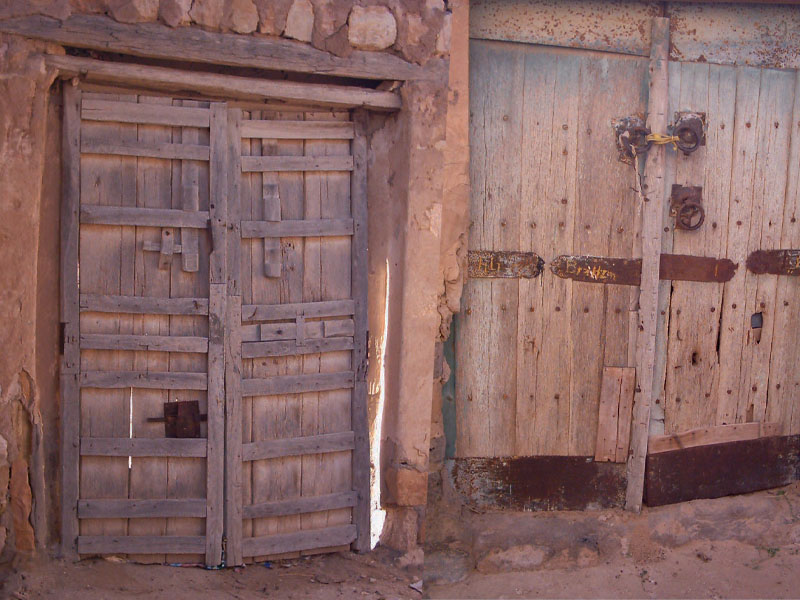Traditional Carpentry and Ancient Doors in the Nafzawa District
Issue 43

By Mohammed Al Jazirawi
A district in southeast Tunisia, Nafzawa is in Qibli province, which is divided into northern and southern regions.
A vast area of the northern region is covered with oases of palm trees due to the abundance of natural spring water. People settled in this region long ago, as evidenced by ruins near Brembah Spring in Tunisia. The sand dunes of the southern region extend to Ghadames in the south and Souf Wadi in the west. Arab and Berber tribes used to travel around this region raising cattle.
The different lifestyles are reflected in the crafts of each region. While construction and crafts made with fronds prevail in the north, weaving and leather items are widespread in the south. Due to the region’s isolation, the traditional techniques used to make crafts have endured; this is also apparent in Morocco’s mountainous and desert areas. Even in the most developed countries, traditional crafts are more prevalent in rural areas than in cities and villages.
This study focuses on ancient doors in the northern part of Nafzawa from the late 19th century to the beginning of the 20th century. It is a result of fieldwork conducted between 2006 and the beginning of 2011 as part of a general study of traditional houses in the villages in desert oases in southern Tunisia.
This study will provide an ethnographic description of the different types and parts of traditional doors by highlighting the craftsmen’s talents, knowledge, experience and skills, and the evolution of his tools. The Convention for the Safeguarding of the Intangible Cultural Heritage focuses on the practices, representations, forms of expression, knowledge, skills, instruments, objects, artefacts and cultural spaces associated with communities, groups and, in some cases, individuals.


































































